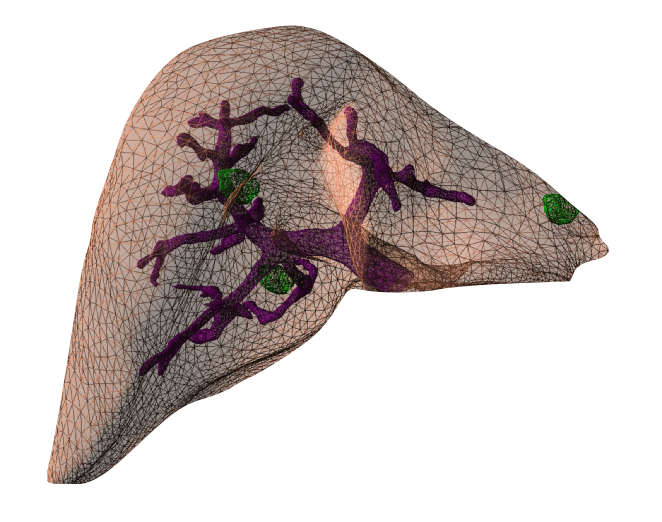Section: Research Program
Real-Time Patient-Specific Computational Models
The main objective of this scientific challenge is the modeling of the biomechanics and physiology of certain organs under various stimuli. This requires describing different biophysical phenomena such as soft-tissue deformation, fluid dynamics, electrical propagation, or heat transfer. These models help simulate the impact of certain therapies (such as cryosurgery or radio-frequency ablation), but also represent the behavior of complex organs such as the brain, the liver or the heart. A common requirement across these developments is the need for (near) real-time computation and the ability to take into account for patient-specific characteristics.
An important part of our research was dedicated to the development of new accurate models that remain compatible with real-time computation. Such advanced models do not only permit to increase the realism of future training systems, but they act as a bridge toward the development of patient-specific preoperative planning as well as augmented reality tools for the operating room. Yet, patient-specific planning or per-operative guidance also requires the models to be parametrized with patient-specific biomechanical data. The objective in this area is related to the study of hyper-elastic models and their validation for a range of tissues. Preliminary work in this area has been done through two collaborations, one with the biomechanical lab in Lille (LML) with which we have a joint PhD student, and the biomechanics group from the ICube laboratory in Strasbourg on the development and validation of liver and kidney models. Another important research topic was related to model reduction through various approaches, such as Proper Generalized Decomposition (PGD). We have already established discussions with the LEGATO team at University of Luxembourg which has very good expertise in this area.
|
We continued our work on cardiac electro-physiology simulation, with a focus on patient-specific adaptation of the model. We also studied the simulation of heat transfer and optimization problems in the context of heat diffusion. This work is a key element of the development of a planning system, such as for cryoablation procedures (Figure 3 ).





